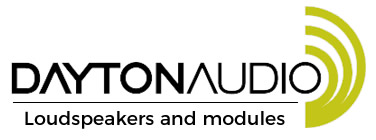New Customer?
Create your accountNo products
Prices are tax included
Understanding audio amplification classes

Understanding audio amplification classes
In audio, an amplifier's class allows it to be categorized according to the characteristics of its output stage. Elements such as transistor or tube polarization, the proportion of input signal used, or conduction time will vary this class.
These classes thus provide general information on how an amplifier works. Please note, however, that this categorization is not intended to rank amplifiers in order of importance, as each class has its own advantages. What's more, an amplifier's sound is not only determined by its class. The entire design of the device varies the sound signature. So it's best to consider the amplifier as a whole, and above all, to rely on your ear and personal sensitivity.
Class A
In a Class A amplifier, the transistors in the power stage are in constant operation, using 100% of the available energy and dissipating constant power. This design has the advantage of limiting the level of distortion for precise, musical reproduction, to the detriment of efficiency, which is barely 25%. As a result, part of the energy received is lost and dissipated in the form of heat. These models therefore generally have limited output power, a large power supply stage and are equipped with heat sinks for efficient heat dissipation.
Some references for Class A amplifiers:
- Original Audio OPA-10 Amplifier Class A Bluetooth 5.0 2x70W 8Ω
- SMSL VMV A1 Amplifier Class A MOSFET PGA2311 2x15W 4Ω
- Tonewinner AD-1PA+ Power Amplifier Class A Stereo 2x300W 8Ω
- Audio-GD Master 2A Power Amplifier Class A Dual Mono Balanced 2x300W 4Ω

Class B
Much less used in HiFi, class B uses only 50% of the available energy, creating a higher efficiency than class A, of the order of 50%, but also with a much higher level of distortion. To reduce distortion, Class B is often used in push-pull circuits. This type of circuit uses at least two transistors, each handling one half of the signal. However, while this arrangement offers high efficiency, it can also generate crossover distortion due to signal discontinuity.
Class AB
A true compromise between class A and class B, class AB places its resting point between those of classes A and B. This architecture enables Class AB to operate in Class A for low-amplitude signals, and to switch to Class B for high-amplitude signals. The result is excellent distortion performance and high efficiency.
Class AB amplifiers often use push-pull circuitry to reduce distortion. However, this can be a disadvantage when amplifying high amplitude signals. Indeed, as the current gain is not constant in this type of configuration, this variation can generate high-frequency distortion, often signified by a slightly more aggressive sound, particularly when listening at high volume.
Some Class AB amplifier references:
- Aperion Audio Energy 7 Power Amplifier Class AB 7 Channels 7x230W 4Ω
- Tonewinner AD-2500Pro Power Amplifier Class AB Stereo 2x950W 4Ω
- Topping LA90D Discrete Amplifier Class AB 2x120W / 1x180W 4Ω Black
- Yamaha A-S201 Amplifier Class AB Pure Direct 2x115W 4Ω

Class D
Contrary to popular belief, Class D amplifiers are not digital (and D is not an abbreviation of Digital). Class D amplifiers don't operate linearly like other amplifiers, but use power components like switches that are either saturated or blocked.
This operation introduces the principles of pulse-width modulation (PWM), pulse-density modulation or more complex systems such as Delta Sigma modulation. The input signal is chopped, i.e. converted into numerous pulses of different lengths, proportional to the amplitude of the source signal at a given time T.
This design offers numerous advantages, and is gaining increasing ground in the audio amplification and HiFi markets. In fact, Class D amplifiers boast high efficiency, of the order of 80-90%, while delivering high-precision sound. The result is compact, high-performance amplifiers that don't require a large power supply and ample heat dissipation.
Quelques références d'amplificateurs Class D:
- Audiophonics HPA-S600NCX Power Amplifier Class D Stéréo NCore NCx500 2x600W 4Ω
- NAD M23 Power Amplifier Class D Purifi 2x380W 4Ω
- Topping PA7 Plus Amplifier Class D Balanced 2x245W 4Ω Black
- SMSL AO300 Amplifier Class D MA5332MS Headphone Amplifier DAC CS43131 2x165W 4Ω 32bit 768kHz DSD256 MQA Black

Class H
Class H amplifiers are mainly found in the professional world, where high power is required. In this type of amplification, the supply voltage is modulated by the input signal (and is therefore not constant), so that the output voltage is always slightly higher than required. In this way, a large energy reserve is available at all times to respond to major power requirements. Generally speaking, the supply voltage is modulated by a Class D amplifier.
The weak point of this type of amplification lies in the possible distortion at mid-volume if the amplifier has to switch between different supply voltages.
Class T
Class T is actually a TriPath trademark. It's an amplification system based on a Class D circuit operating at a precise frequency of 650kHz and equipped with a proprietary modulation method. This type of amplification uses a single chip. While this makes for inexpensive, compact devices, it does not enable extremely high power levels to be achieved. What's more, this type of equipment is tending to disappear as the brand goes bankrupt.
The special case of FDAs
FDA amplifiers for Full Digital Amplifier are based on fully digital operation. In these designs, digital-to-analog conversion only takes place at the last stage, before output to the terminals. As a result, these models benefit from a particularly short circuit from input to output. Amplification and signal processing are thus carried out directly in digital form, favoring sonic precision and limiting distortion. FDA models are perfectly suited to modern applications, i.e. the use of streaming audio platforms, dematerialized files or any current digital source. What's more, they are often compact and affordable.
Some FDA amplifier references:
- SABAJ A30A Amplifier FDA 2x STA516BE AX5689 Bluetooth aptX HD LDAC 2x200W 4 Ohm
- SMSL AD18 V3.1 Amplifier FDA Bluetooth NFC TAS5342A 2x 70W + Subwoofer Output / 4 Ohm
- ARYLIC H50 Amplifier FDA Stereo WiFi DLNA UPnP Bluetooth 5.2 2x50W 4 Ohm
- SMSL VMV A2 Amplifier FDA Bluetooth aptX-HD LDAC UAT Subwoofer 2x200W 4 Ohm

Rechercher dans le blog
Blog categories
Latest Comments
Audiophonics Team
on DIY Tutorial - PiCorePlayer - Installing...Pierre Bommel
on Lecteur réseau Opensource : SolutionsPierre Bommel
on DIY Tutorial - PiCorePlayer - Installing...Audiophonics Team
on Tutorial DIY - Power cable ELECAUDIO CS-331B






























